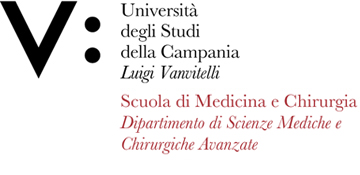Michelangela BARBIERI
Insegnamento di INTERNAL MEDICINE AND GERIATRICS 1
Corso di laurea magistrale a ciclo unico in MEDICINA E CHIRURGIA
SSD: MED/09
CFU: 5,00
ORE PER UNITÀ DIDATTICA: 50,00
Periodo di Erogazione: Annualità Singola
Italiano
| Lingua di insegnamento | INGLESE |
| Contenuti | Insegnamento sulle conoscenze scientifiche e cliniche utili alla diagnosi, al trattamento e alla cura dei pazienti. |
| Testi di riferimento | Harrison's Principles of Internal Medicine, 20 th Edition Textbook |
| Obiettivi formativi | L'obiettivo principale del corso di Medicina Interna e Geriatria è insegnare come applicare le conoscenze scientifiche e le competenze cliniche alla diagnosi, al trattamento e alla cura dei pazienti. Particolare attenzione sarà riservata ai pazienti anziani complessi, con polipatologie. In particolare, l'obiettivo del Corso è quello di insegnare la metodologia clinica utile ad identificare i tanti e spesso diversi problemi di salute del paziente, valutati nella loro interezza, attraverso la raccolta dell'anamnesi, l'interpretazione dei sintomi e dei segni, la valutazione dei dati di laboratorio e dati strumentali, nonché la formulazione ragionata di ipotesi diagnostiche. |
| Prerequisiti | Lo studente deve aver già superato tutti gli esami del 4 ° e 5 ° anno |
| Metodologie didattiche | Gli argomenti vengono affrontati attraverso l'analisi di casi clinici paradigmatici. In questo modo, gli studenti vengono addestrati a risolvere quesiti diagnostici a volte complessii e a gestire malattie croniche anche gravi e situazioni in cui possono essere presenti più patologie contemporaneamente .Parte dell'insegnamento è teorico e parte è un apprendimento a letto del paziente per insegnare agli studenti di medicina ad interagire con i pazienti fornendo loro elementi essenziali pratici. |
| Metodi di valutazione | Esame orale. Al termine del corso lo studente dovrà dimostrare una solida conoscenza delle principali tematiche legate alle patologie dei vari organi, per poter sviluppare percorsi diagnostici differenziali, saper interpretare analisi di laboratorio e strumentali, nonché possedere una buona conoscenza della farmacologia clinica e saper prendere decisioni terapeutiche appropriate. |
| Altre informazioni | Nessuna |
| Programma del corso | Di seguito viene fornito un elenco delle principali patologie da tenere in considerazione nell'approccio diagnostico del paziente: |
English
| Teaching language | English |
| Contents | lessons on scientific knowledge and clinical expertise to the diagnosis, treatment, and care of patients across the spectrum from health to complex illness. |
| Textbook and course materials | Harrison's Principles of Internal Medicine, 20 th Edition Textbook |
| Course objectives | The main objective of the Internal Medicine and Geriatrics Course is to teach how to apply scientific knowledge and clinical expertise to the diagnosis, treatment, and care of patients across the spectrum from health to complex illness. Particular attention will be paid to the elderly complex patients, with polypathologies. In particular, the objective of the Course is to teach the clinical methodology useful to identify the many and often different problems of health of the patient, assessed in their entirety, through the collection of personal data, the interpretation of symptoms and signs, laboratory and instrumental data, as well as the reasoned formulation of diagnostic hypotheses. |
| Prerequisites | Student must have already passed All the 4th and 5th year exams |
| Teaching methods | Topics are addressed through the use of paradigmatic clinical cases. In this way, students are trained to solve puzzling diagnostic problems and handle severe chronic illnesses and situations where several different illnesses may strike at the same time.Part of the teaching is theoretical and part is a bedside learning - helping medical students to interact with patients and providing them with practical essentials. |
| Evaluation methods | Oral examination. At the end of the course the student will have to demonstrate a solid knowledge of the main topics related to the diseases of the various organs, to be able to develop differential diagnostic paths, to know how to interpret laboratory and instrumental analyses, as well as have a good knowledge of clinical pharmacology and know how to make appropriate therapeutic decisions. |
| Other information | Any further information |
| Course Syllabus | A list of the main conditions that must be taken into consideration in the diagnostic approach of the patient is given below: |








